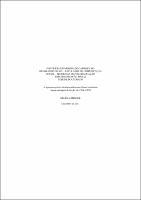| Share record |


|
Please use this identifier to cite or link to this item:
https://tede2.pucrs.br/tede2/handle/tede/4480Full metadata record
| DC Field | Value | Language |
|---|---|---|
| dc.creator | Stigger, Helena Maria Antonine | - |
| dc.creator.Lattes | http://buscatextual.cnpq.br/buscatextual/visualizacv.do?id=K4261087Y8 | por |
| dc.contributor.advisor1 | Gutfreind, Cristiane Freitas | - |
| dc.contributor.advisor1Lattes | http://buscatextual.cnpq.br/buscatextual/visualizacv.do?id=K4761795H9 | por |
| dc.date.accessioned | 2015-04-14T14:41:29Z | - |
| dc.date.available | 2012-01-13 | - |
| dc.date.issued | 2011-12-06 | - |
| dc.identifier.citation | STIGGER, Helena Maria Antonine. A representação da ditadura militar nos filmes brasileiros longa metragem de ficção : de 1964 a 2010. 2011. 280 f. Tese (Doutorado em Comunicação Social) - Pontifícia Universidade Católica do Rio Grande do Sul, Porto Alegre, 2011. | por |
| dc.identifier.uri | http://tede2.pucrs.br/tede2/handle/tede/4480 | - |
| dc.description.resumo | A presente tese analisa a representação da ditadura militar nos longas-metragens de ficção brasileiros desde o golpe de 1964 até o ano de 2010. Evidenciamos que três elementos representam simbolicamente o governo militar: a tortura, o militar e o militante da esquerda. Partindo dessa premissa, estudamos as variações e as possibilidades de representação da ditadura militar brasileira ao longo dessas quatro décadas ao analisar o modo como esses elementos se constituem na narrativa. Como metodologia, aplicamos a técnica de análise fílmica numa amostra de vinte e quatro filmes realizados entre os anos de 1979 a 2010. No entanto, evidenciamos que a ditadura militar tem sido representada no cinema desde o seu acontecimento, sendo assim, buscamos estudar três obras do Cinema Novo: O desafio, Terra em transe e Os inconfidentes. Desse modo, foi possível traçar um paralelo entre a temática desses filmes com produções posteriores à Lei da Anistia auxiliados pelos estudos sobre cinema de Jean-François Lyotard, da violência de Hannah Arendt e sobre a alegoria de Ismail Xavier. A partir dessas análises, podemos entender que os filmes posteriores a 1979 representam basicamente os anos de chumbo ocorridos no período de 1964-1974, pois em torno de 1973, as organizações da esquerda já haviam sido desestruturadas pelo governo. Daí foi possível identificar que a tortura era uma constância nesses filmes e para retratá-la, as narrativas usaram uma estética mais convencional. Portanto, para o estudo da tortura recorremos às teorias de Giorgio Agamben e Hannah Arendt. Para as análises sobre o torturador (militar) e o torturado (militante) nos baseamos nos estudos de Aarão Reis Filho. E, como suporte teórico nos estudos históricos sobre a ditadura militar, nos baseamos nas análises de Carlos Fico, Elio Gaspari e Marcelo Ridenti. | por |
| dc.description.abstract | This thesis analyses the representation of the military dictatorship in the Brazilian fiction feature films from the military coup of 1964 until 2010. We evidence that three elements symbolically represent the military government: the torture, the military and the militant of the armed left wing. As from this premise, we studied the variations and the possibilities of the Brazilian military dictatorship representation during those four decades by analyzing how the cinematographic speech is presented on the narrative. The methodology used was the filmic analysis of a sample composed by twenty-four movies produced between 1979 and 2010. However, we show that the military dictatorship has been represented since its beginning on cinema. Thus, we focused on studying three titles that belong to the Cinema Novo movement: O desafio, Terra em transe and Os inconfidentes. Therefore, it was possible to make a comparison between these films themes and the productions posterior to the Amnesty Law, assisted by Jean-François Lyotard s cinema studies, Hannah Arendt s violence and Ismail Xavier s allegory. From this analysis, we could understand that the movies made after 1979 basically represent the military dictatorship years between 1964 and 1974, because around 1973 the left wing organizations had already been dismantled by the government. Then, it was possible to identify that torture was a constant in those films, and to portray it, the narratives used a more conventional esthetic. | eng |
| dc.description.provenance | Made available in DSpace on 2015-04-14T14:41:29Z (GMT). No. of bitstreams: 1 436061.pdf: 3743641 bytes, checksum: 5731b11fbe0b57f5fea078a59bd637c6 (MD5) Previous issue date: 2011-12-06 | eng |
| dc.format | application/pdf | por |
| dc.thumbnail.url | http://tede2.pucrs.br:80/tede2/retrieve/14187/436061.pdf.jpg | * |
| dc.language | por | por |
| dc.publisher | Pontifícia Universidade Católica do Rio Grande do Sul | por |
| dc.publisher.department | Faculdade de Comunicação Social | por |
| dc.publisher.country | BR | por |
| dc.publisher.initials | PUCRS | por |
| dc.publisher.program | Programa de Pós-Graduação em Comunicação Social | por |
| dc.rights | Acesso Aberto | por |
| dc.subject | CINEMA - BRASIL | por |
| dc.subject | DITADURA MILITAR, 1964-1985 - BRASIL | por |
| dc.subject | TORTURA | por |
| dc.subject.cnpq | CNPQ::CIENCIAS SOCIAIS APLICADAS::COMUNICACAO | por |
| dc.title | A representação da ditadura militar nos filmes brasileiros longa metragem de ficção : de 1964 a 2010 | por |
| dc.type | Tese | por |
| Appears in Collections: | Programa de Pós-Graduação em Comunicação Social | |
Files in This Item:
| File | Description | Size | Format | |
|---|---|---|---|---|
| 436061.pdf | Texto Completo | 3.66 MB | Adobe PDF |  Download/Open Preview |
Items in DSpace are protected by copyright, with all rights reserved, unless otherwise indicated.




